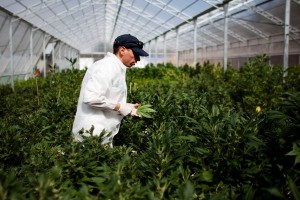 The U.S. Environmental Protection Agency (EPA) awarded more than $1 million in grants to 15 university and college teams from across the country who participated in the 8th Annual National Sustainable Design Expo on the National Mall in Washington, D.C. for their innovative environmental solutions. EPA’s People, Prosperity and the Planet (P3) award competition was held at the expo, and featured more than 300 college innovators showcasing their sustainable projects designed to protect the environment, encourage economic growth and use natural resources more efficiently. Some P3 team projects include a new process that uses spinach to capture and convert the sun’s energy to electricity and a partnership with a local landfill to design a process that uses waste heat and drainage to grow algae for biodiesel production.
The U.S. Environmental Protection Agency (EPA) awarded more than $1 million in grants to 15 university and college teams from across the country who participated in the 8th Annual National Sustainable Design Expo on the National Mall in Washington, D.C. for their innovative environmental solutions. EPA’s People, Prosperity and the Planet (P3) award competition was held at the expo, and featured more than 300 college innovators showcasing their sustainable projects designed to protect the environment, encourage economic growth and use natural resources more efficiently. Some P3 team projects include a new process that uses spinach to capture and convert the sun’s energy to electricity and a partnership with a local landfill to design a process that uses waste heat and drainage to grow algae for biodiesel production.
“The competition and expo are not only about EPA’s prestigious P3 award, but also about supporting the next generation of this country’s innovators and entrepreneurs who are entering the environmental and public health field with passion to make a difference and many brilliant ideas,” said Lek Kadeli, acting assistant administrator for the EPA’s Office of Research and Development. “The P3 program gives these students the opportunity to bring those ideas to realization and many have the potential to make significant impacts on our nation’s sustainable future and development of environmental technologies.”
Two of the award winners were – Santa Clara University for developing a high efficiency solar absorber/exchanger that can bring low cost energy to urbanites who have limited space for solar collectors and Embry-Riddle Aeronautical University for designing a foldable solar power water purification system that can fit into a backpack for easy transport for use after a disaster affecting drinking water supply. Read the article see and list of winners.








